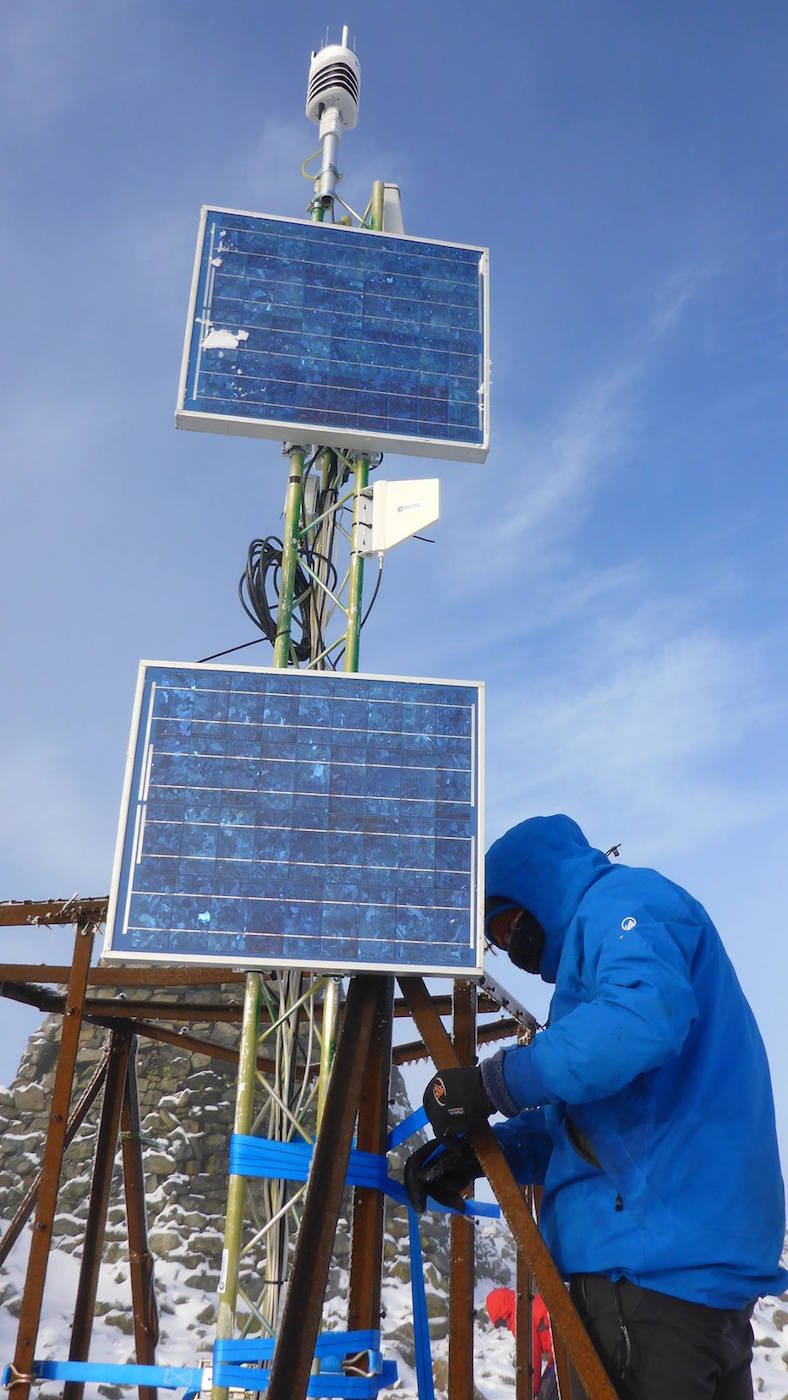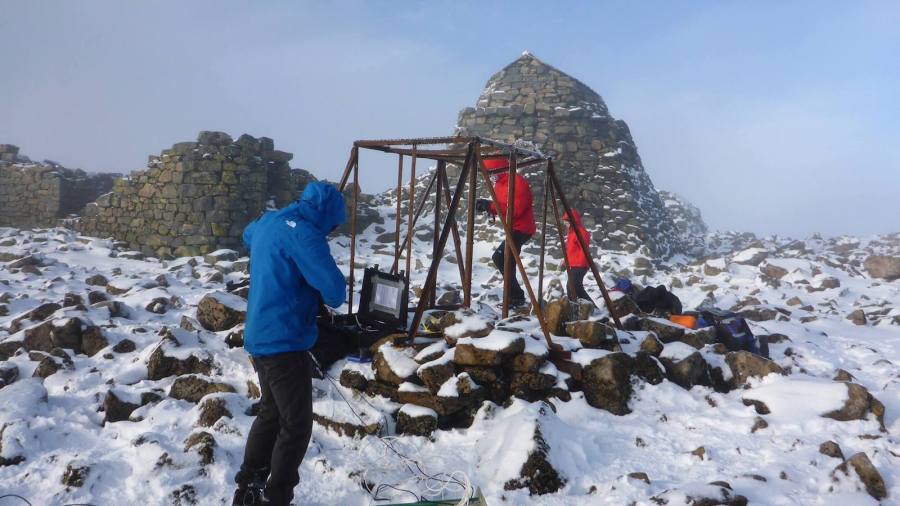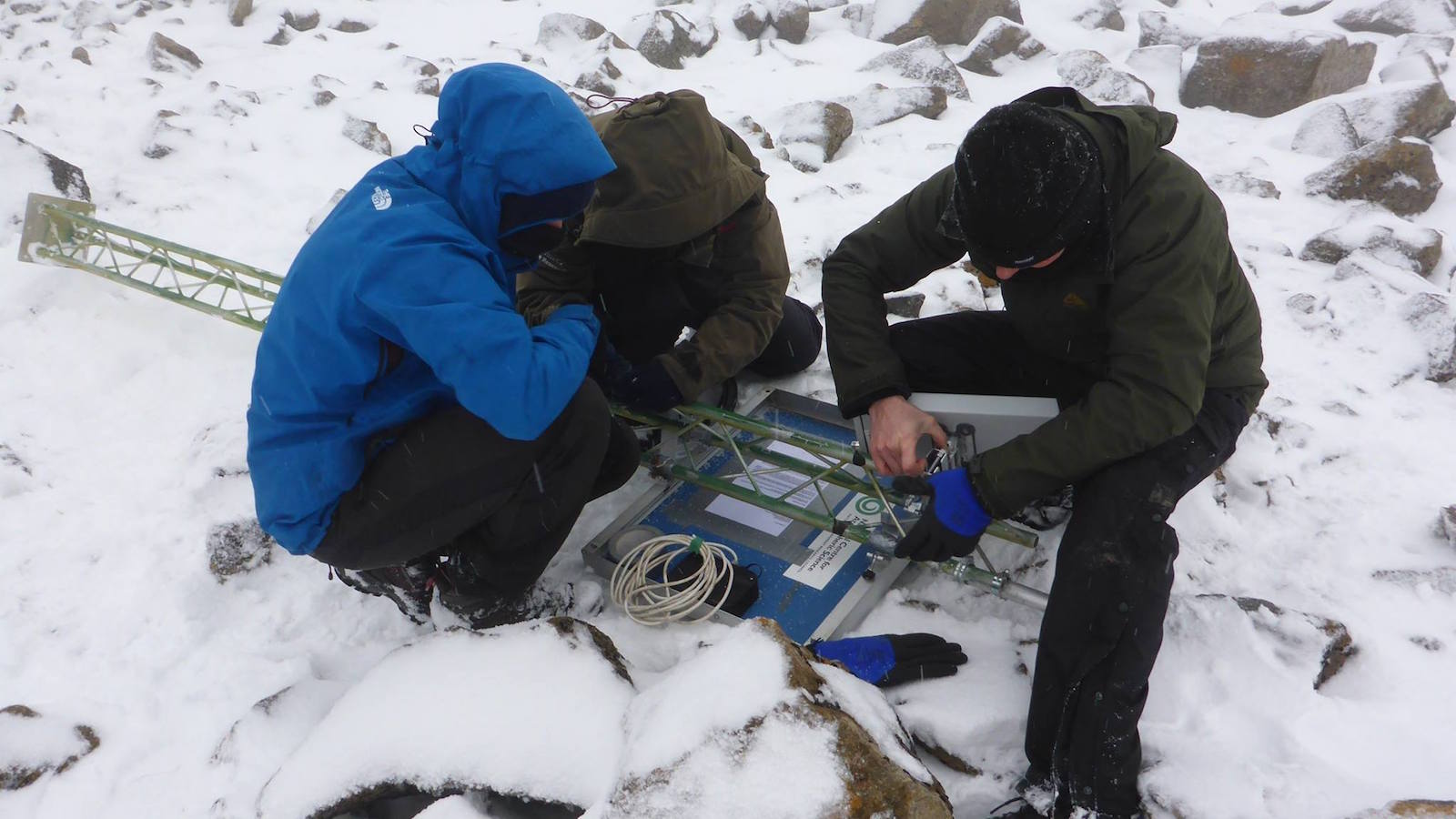A new automatic weather station has been installed on the summit of Ben Nevis, recording live weather data after a 113-year gap
A group of Natural Environment Research Council (NERC) scientists climbed the UK’s highest mountain this week, assisted by local guide Ron Walker from Cairngorm Guides & Talisman Mountaineering, to install a weather station that will record conditions on the summit for the first time in 113 years.
It’s the latest stage of ‘Operation Weather Rescue: Ben Nevis‘, which launched in September 2017 and appealed to the public to help digitise two million weather measurements taken by a group of 19th-century meteorologists known as the ‘Weathermen of Ben Nevis’ by hand, every hour, from 1893 to 1904. Since September, over 3,500 volunteers have digitised over 1.25 million weather observations.
Dr Harriett Richardson, Communications Manager for the NCAS, was the initial project coordinator.
Dr Barbara Brooks and her team, joined by guides, installed the temporary, automatic weather station to record wind speed and direction, pressure, temperature, precipitation and humidity on the summit of Ben Nevis for the first time since 1904.
From next week the data will be available for the public to view in real time on the NCAS website.
Weather window
Dr Brooks said: “Thankfully, technology has moved on so there’s no need for our team to be stationed on the summit over the winter months.
“Having access to Ben Nevis’s records through Operation Weather Rescue means we will be able to start making comparisons, looking for any patterns and better understand the conditions on our mountain tops.
“If we can prove that the technology works and the data is robust, we’re hopeful this could lead to a new, permanent weather station on the summit, which would be invaluable for meteorologists.”
 The Great Outdoors spoke to Ron Walker, the guide who accompanied them to the summit and assisted them in their work.
The Great Outdoors spoke to Ron Walker, the guide who accompanied them to the summit and assisted them in their work.
“I was asked to look after them and guide them to a suitable site on the summit of Ben Nevis to set up the weather station,” Ron said.
“We agreed on setting aside several days in the hope we would get a day of settled weather to carry up all the kit and set up the weather station and webcam. I was initially doubtful that we’d get the right settled weather before the full winter arrived. We were really lucky and got the one day of calm settled weather needed between the early winter storms and the 60-70mph winds!
“The summit team consisted of Dr Barbara Brooks, James Groves, Nathan Betts (Comms), Dr Ioana Colfescu, Sam (Nathan’s mate) and myself as guide. None of the team apart from Barbara had been up Ben Nevis before but had worked in similar Arctic and Alpine projects carrying similar kit – which, apart from the weather instrumentation and electronics, included a 3m mast, heavy batteries and solar panels.
“A very early start in the dark gave us just a two-hour working weather window on the summit (temperature of -3.7˚C) to install and set up the station before we needed to get back to avoid the dark and the next storm. The team did really well and we got back just as the light faded and the heavy rain and summit snow moved in.”
VIDEO: Ron Walker’s footage from the installation procedure
The original Observatory
The idea for taking weather observations from the summit of Ben Nevis was first proposed in 1879, when the Scottish Meteorological Society set aside £1,000 for the construction of the summit observatory. In 1881, one Clement Lindley Wragge offered to climb Ben Nevis daily to take observations from the top until the observatory could be completed, and he did indeed climb the mountain every single day from June 1 until October 13 1881, accompanied by his faithful dog Robin Renzo. He started at 4.40am every day, by pony as far as the 640m contour, taking a route via the north flank of Meall an t-Suidhe no longer in common use.
In March 1882, the Society presented Wragge with a gold medal for his contributions to science. He resumed his observations in summer 1882, but did not stay on to work at the Observatory, which commenced operations on November 28 1883 and operated until 1904. There was usually a crew of three in attendance (two observers and a cook) and the entire structure was often completely buried in snow during the winter months. The first superintendent of the Observatory was paid £100 per annum for his services.
The new weather station, the Vaisala WXT536, relies on 3G coverage to transmit its recordings – a far cry from the telegrams sent by the 19th-century pioneers. However, they are using the same instrument cage used by Clement Wragge in 1882.
To join Operation Weather Rescue: Ben Nevis and help the team complete their mission by digitising ‘lost’ data of temperatures, pressure, rainfall, sunshine, cloudiness, wind strength and wind direction, visit www.weatherrescue.org and follow the instructions in the tutorial.
All images © Ron Walker









